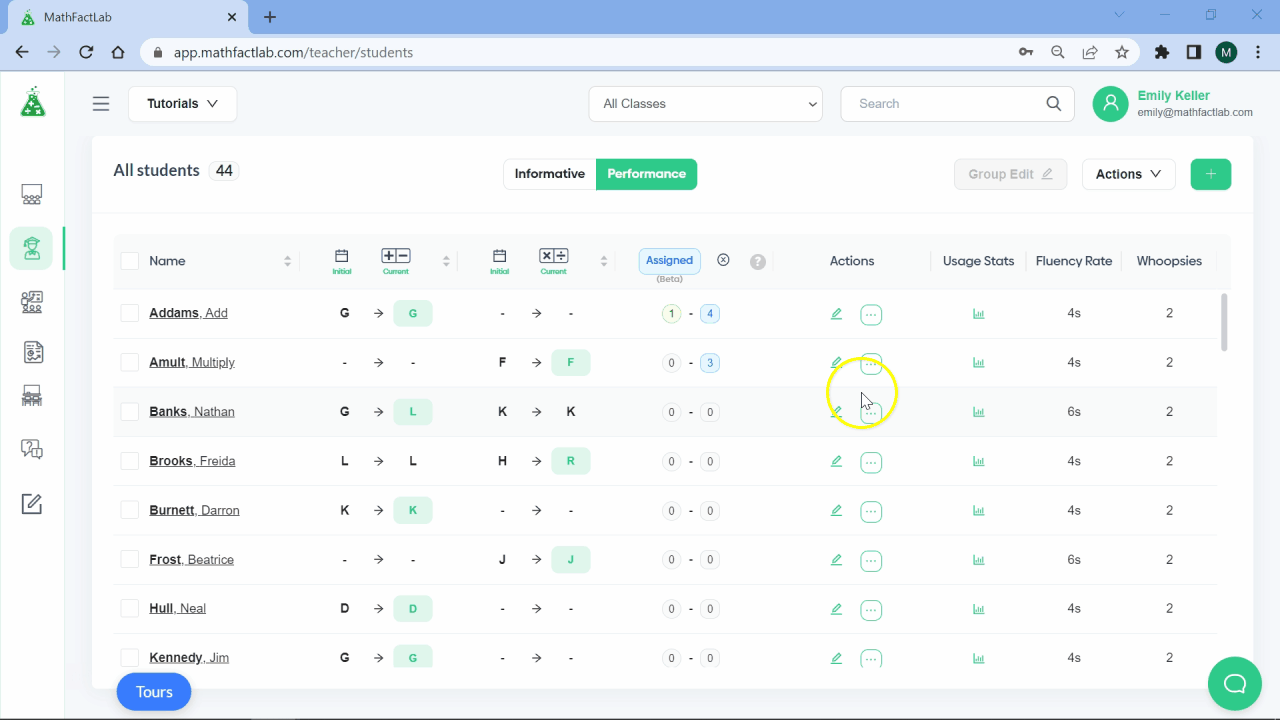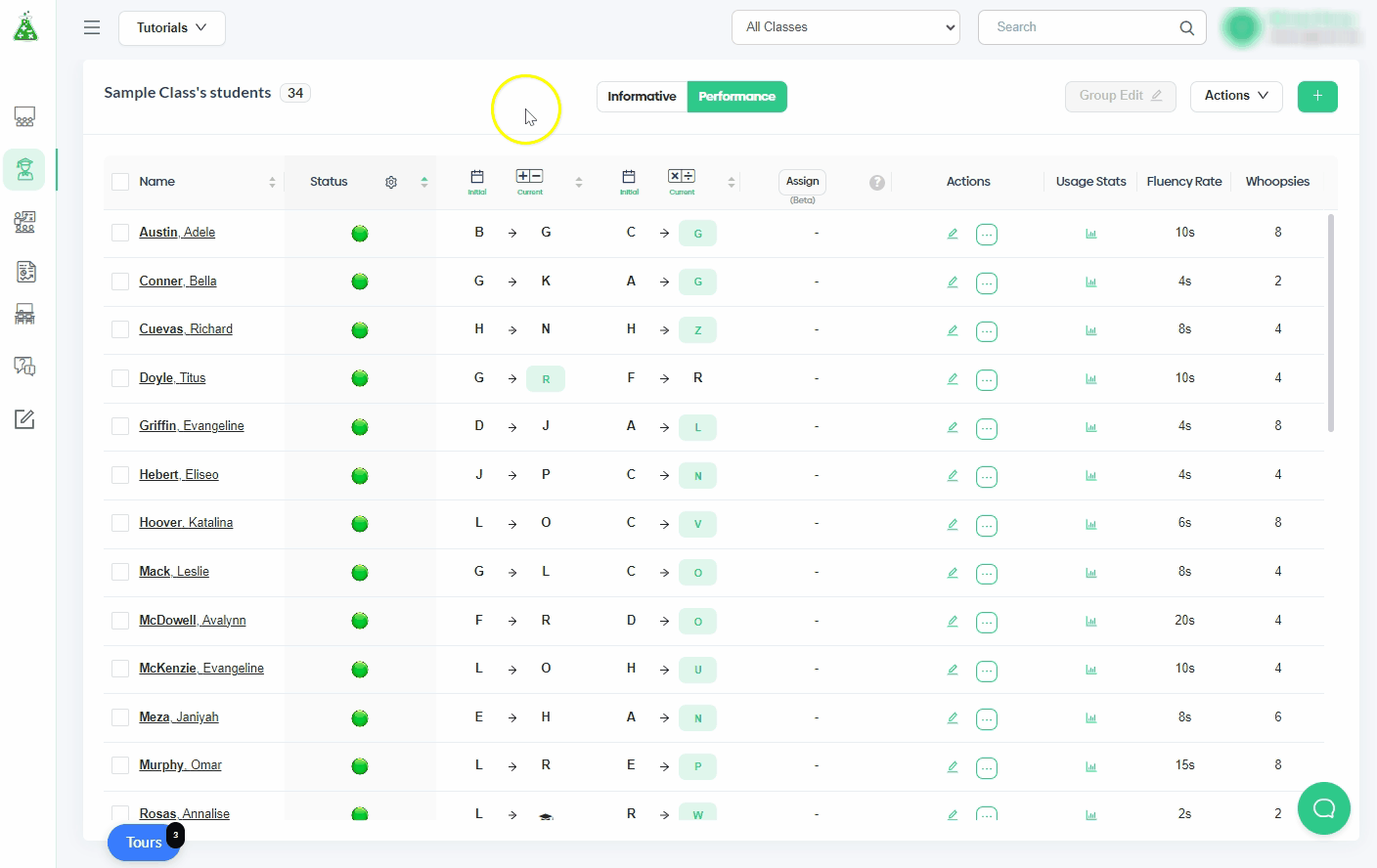Family Plan Step 7: How Students Progress
In MathFactLab, your child will take an assessment to show that they are ready to move on to the next level of the program. We call these assessments 'Level Lifters.
Besides the placement test, Level Lifters are the only time your child will work through problems not accompanied by strategies and models. This is to see if your child has internalized these and is ready to move on.
Table of Contents
- Overview of Level Lifters
- Unlocking Level Lifters
- Level Lifter Passing Requirements
- Level Lifter Interviews: An Alternative Means of Assessment
- Level Lifter Reports
Overview of Level Lifters
'Level Lifters' are the name we use for the assessments students take to move up a level in both the addition/subtraction and multiplication/division programs.
Level Lifters allow students the opportunity to demonstrate that they are able to efficiently apply the strategies they have been practicing at their current level and from previous levels. Level Lifters (and Placement Tests) are the only time that students are asked to solve math facts prompts without being provided an accompanying strategy for solving.
Each level lifter comes in 3 parts:
- First operation fact problems: either addition or multiplication
- Second operation fact problems: either subtraction or division fact problems
- Results:
- If a student passes, they receive a 'Congratulations' message.
- If a student does not pass, they are shown their Level Lifter report to help them see what progress they still need to make.
- Note: Student Level Lifter reports do not provide the response rate in seconds. Rather, their responses are placed in three categories: Correct response, fluent; Correct response, not yet fluent; and Incorrect response.
Unlocking Level Lifters
Typically, students need to 'unlock' a Level Lifter. They can do this in two ways.
How Students Unlock the Level Lifter for the First Time
To unlock a Level Lifter for the first time, students must complete all of the activities on the student dashboard. A checkmark appears on the top right of a menu option when it is completed. When all activities have been completed, the Level Lifter button becomes clickable.
Students do not need to begin the Level Lifter once it has been unlocked. They are welcome to continue practicing until they feel ready.
How Students Unlock the Level Lifter for Subsequent Attempts
To unlock the Level Lifter again (after not passing it), or to unlock a Level Lifter in the super-advanced multiplication/division levels, students must meet certain criteria. Typically, students need to earn 900 points on two activities, one for each operation.
The rationale for this requirement is that it allows students the opportunity to focus on their preferred strategies, and earning 900 points gives a student a good chance of passing the Level Lifter.
Answering all of an activity's problems correctly and within the assigned fluency rate earns a student 1000 points. Points are deducted for incorrect or not-yet-fluent responses.
How Teachers Can Manually Unlock Level Lifters
If you feel a student is ready to take a Level Lifter, you can unlock the Level Lifter for the student by doing the following:
- Go to the Students tab on the teacher dashboard.
- Find the student whose Level Lifter you wish to unlock.
- Click the 3-dots action button on that student's row. (You'll find this in the Actions column, just beside the edit button.)
- Select 'Unlock Level Lifter'.

- Ask the student to go to their dashboard or to refresh if they are already there.
- Their Level Lifter will now be available for them to take when ready.
Note: Unlocking the level lifter provides one-time access to the Level Lifter. Meaning, the typical requirements will again apply after the Level Lifter has been taken.
Level Lifter Passing Requirements
To move up a level, students need to demonstrate fluency with the newly-learned facts of their current level along with the facts from previous levels.
Fluency, here, means responding accurately to prompts within a student's assigned fluency rate. For example, if a student has an assigned fluency rate of 6 seconds, any correct response within 6 seconds would be considered fluent.
Retakes
Like all of us, kids make typos, so we take that into account on Level Lifters. Students are allowed to reanswer up to 15% of problems on each section of a Level Lifter. For example, if a section of a Level Lifter has 20 problems, students are allowed 3 retakes. If the student has answered any problems incorrectly or outside of their fluency rate, they will be reasked (up to 3 of) these problems as the final questions for that section. Student responses to these retake problems replace previous responses. Students are not informed that these are 'retake' problems.
Whoopsies: How to Adjust the Passing Requirements
To provide additional flexibility in Level Lifter passing requirements, students are also allowed 'whoopsies'. A ‘whoopsie’ is an error on a Level Lifter. A late response counts as 1 whoopsie, while an incorrect response counts as 2 whoopsies. Allowing, for example, 4 whoopsies means that a student could respond late to up to 4 prompts or answer 2 incorrectly (or a combination totaling up to 4 whoopsies) and still pass the Level Lifter. For most students, we recommend 6 to 10 whoopsies. Younger students will typically need more than older students
The ‘Staggered’ option increases the number of allowed ‘whoopsies’ by 2 with each Level Lifter attempt - from 8 up to a total of 16 on the fourth or more Level Lifter attempt.
Providing flexibility in passing requirements helps struggling students stay motivated.
To adjust an individual student's number of whoopsies:
- Select the Students tab.
- Click the edit icon on the line of the student whose whoopsies you would like to adjust.
- In the bottom right of the Edit Student screen, you'll see the Whoopsies dropdown. Select the number of whoopsies you think is best. Or choose the staggered option.

To adjust the number of whoopsies for multiple students:
- Select the Students tab.
- Click the checkbox of the students you wish to adjust. Or click the checkbox in the header if you wish to adjust all students.
- Click the 'Group Edit' button in the upper right.
- Select the number of whoopsies you would like these students to be allowed in the bottom right of the Edit Student popup.

Passing Requirements in Detail
To demonstrate fluency a student needs to not exceed their number of whoopsies. (Note, this is after the 15% retake allowance has been given.)
- Example 1: A student with zero allowed Whoopsies would need to respond to all prompts correctly and within their fluency rate.
- Example 2: A student with two allowed Whoopsies could pass a Level Lifter with either two non-fluent responses or one incorrect response.
- Example 3: A student with four allowed Whoopsies could pass with four non-fluent or two incorrect responses (or another combination adding up to four Whoopsies).
Level Lifter Interviews: An Alternative Means of Assessment
Some students, for a potential range of reasons, do not perform to their full potential on standard Level Lifters. For them, we have built Level Lifter Interviews. Level Lifter Interviews ask the same questions as a typical Level Lifter, but they are implemented by the teacher on the teacher's device and do not require any typing by the student.
You can give a student a Level Lifter Interview at any time. The student does not need to unlock the Level Lifter first. (Of course, we would recommend that the student completes the practice activities first, in order to better prepare themselves.)
To begin a student Level Lifter Interview, do the following:
- Go to the Students tab on the teacher dashboard.
- Find the student who you wish to interview.
- Click the 3-dots action button on that student's row. (You'll find this in the Actions column, just beside the edit button.)
- Select 'Level Lifter Interview'.

The interview is similar to a typical Level Lifter with the following exceptions:
- The student responds orally.
- The teacher determines if the answer is acceptable (by hitting the spacebar) or not (by hitting any key).
- Each section of the test can be ended at any point.
- After both parts of the interview are completed, the student's Level Lifter report is displayed. The teacher then determines if the student has passed, by hitting one of two buttons: 'Level up!' or 'Not yet.'
Level Lifter Reports
Level Lifter reports are formatted similarly to the Placement Test reports:
- Green for correct and fluent
- Yellow for correct but not yet fluent
- Red for an incorrect response.
- Student response time is provided for each question.
To find a report on the student's most recent Level Lifter, just click the letter of the student's current level.

Level Lifter reports are not yet downloadable. Making them so is on our to-do list.
The Articles in the Getting Started with a Family Account Series of Help Docs
1. Creating an Account for Your Child
2. Generating a Login Card for Your Child
4. Your Child's Placement Test
5. Editing Your Child's Settings
6. Your Child's Practice Sessions
7. Level Lifters: How Your Child Advances through the Program